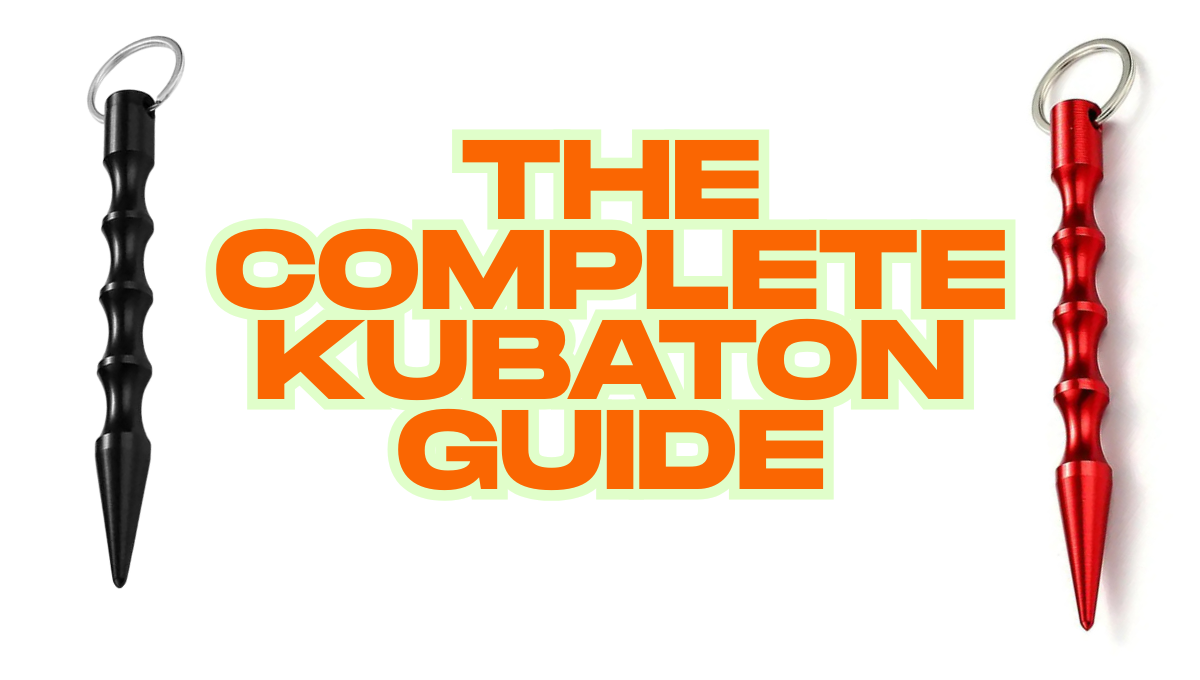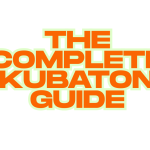Introduction: Why We’re Experts on Personal Safety & Kubatons
At Women’s Self-Defense Keychain, we believe everyone deserves to feel safe and empowered. For years, we’ve been dedicated to providing discreet, effective self-defense tools and the knowledge to use them confidently. We understand that choosing a self-defense option can be overwhelming, and that’s why we’re passionate about demystifying tools like the kubaton. This Complete Kubaton Guide is born from extensive research, practical training, and a commitment to helping you protect yourself. We’ll cover everything from its origins to advanced techniques, legal aspects, and how to choose the right kubaton for your needs. Let’s dive in!
1. What Exactly Is a Kubaton? A Deep Dive into Its History & Purpose
1.1 The Origins of the Kubaton: From Martial Arts Training to Self-Defense
The kubaton, often referred to as a self-defense key chain or impact weapon, has a fascinating history. It wasn’t originally designed for street defense! Its roots lie in Japanese martial arts, specifically Gōjū-ryū karate. In the 1970s, Bruce Juchnik, a police officer and martial artist, adapted a pressure point training tool used by Okinawan masters into a more portable and practical self-defense device. He named it the “Kubaton,” derived from the Okinawan word for club or stick. Initially, it was primarily utilized by law enforcement and security personnel as a non-lethal force option.
1.2 How Does a Kubaton Work? Understanding Pressure Points & Impact
A kubaton isn’t about brute strength; it’s about precision. It concentrates force onto vulnerable pressure points on the body – areas where nerves are close to the surface and relatively unprotected. These include:
- Collarbone: A strike here can cause significant pain and disorientation.
- Sternum: Another sensitive area, a firm impact can disrupt breathing.
- Knees & Elbows: Targeting joints can compromise mobility.
- Shin: Painful and effective for creating distance.
- Instep: A quick strike to the instep can temporarily disable an attacker.
The kubaton’s shape allows you to deliver focused strikes with minimal effort, maximizing impact and minimizing your risk of injury. It’s a force multiplier – making your self-defense efforts more effective.
1.3 Kubaton vs. Other Self-Defense Tools: What Sets It Apart?
Compared to pepper spray or stun guns, kubatons offer several advantages:
- Discreetness: They often resemble keychains and don’t immediately scream “weapon.”
- Legality: Generally less restricted than other self-defense tools (though laws vary – see section 10).
- No Reliance on Batteries/Propellants: Always ready to use.
- Training Required: While simple in concept, effective use requires practice.
However, they also have limitations:
- Close Range: Effective within arm’s reach.
- Requires Physical Contact: Unlike pepper spray, you need to be close to the attacker.
- Potential for Injury (to both parties): Proper training is crucial to avoid excessive force.
2. Types of Kubatons: Choosing the Right One For You
2.1 Traditional Kubaton Designs: Materials & Features
Traditional kubatons are typically made from hard polymers, aluminum, or wood. They usually feature a keychain ring for easy carry and a textured grip for secure handling. Length generally ranges from 5-7 inches. The shape is often cylindrical or slightly tapered for comfortable gripping and effective striking.
2.2 Tactical Kubatons: Enhanced Grip & Functionality
Tactical kubatons go beyond the basics, incorporating features like:
- Aggressive Texturing: For a more secure grip even with sweaty hands.
- Spiked Ends: Can increase impact and deter attackers (check legality!).
- Integrated Whistles/Lights: Adding extra layers of safety.
- Finger Grooves: Improve control and striking accuracy.
2.3 Keychain Kubatons: Discreet & Convenient Options
These are the most common type, designed to blend in with your everyday keys. They’re often smaller and lighter than traditional or tactical kubatons but still provide a valuable self-defense tool. Look for models made from durable materials like aluminum alloy.
2.4 Novelty Kubatons: Be Wary of Quality & Effectiveness
While some novelty kubatons may look appealing, they often lack the durability and ergonomic design needed for effective self-defense. Prioritize quality over aesthetics when choosing a kubaton. A flimsy kubaton could break during use, leaving you vulnerable.
3. Basic Kubaton Grips: Mastering Control & Power
3.1 The Palm Grip: Foundation of Kubaton Handling
The palm grip is the most fundamental grip. Hold the kubaton firmly in your palm with your fingers wrapped around it securely. Your thumb should be positioned along the side for control, and your knuckles should align with the striking surface. This grip provides stability and allows you to generate power from your entire arm.
3.2 The Finger Grip: Precision & Targeting
The finger grip involves holding the kubaton between your fingers, allowing for more precise targeting of pressure points. This grip is ideal for quick, focused strikes. It requires more dexterity but offers greater control over the direction and intensity of your impact.
3.3 Modified Grips: Adapting to Different Situations
Experiment with different grips to find what feels most comfortable and effective for you. Consider variations that allow for faster deployment or better leverage in tight spaces.
4. Essential Kubaton Techniques: Strikes & Defenses
4.1 The Palm Heel Strike: A Powerful First Response
This is one of the first techniques you should learn. Aim for the collarbone, sternum, or chin with a forceful strike using the heel of your palm while holding the kubaton securely. Focus on driving through the target rather than just hitting it.
4.2 The Instep Strike: Disrupting Mobility
A quick, downward strike to the instep can temporarily disable an attacker’s ability to move. Use a firm grip and focus on delivering a concentrated impact.
4.3 Elbow Strikes with Kubaton Assistance: Amplifying Force
Holding the kubaton in your hand while performing an elbow strike adds significant force and impact. This technique is particularly effective for close-range defense.
4.4 Knee Strikes with Kubaton Support: Increasing Power & Range
Similar to elbow strikes, using a kubaton during a knee strike can amplify power and extend your reach.
5. Advanced Kubaton Techniques: Beyond the Basics
5.1 Targeting Multiple Pressure Points in Succession
Once you’ve mastered basic techniques, practice combining strikes to multiple pressure points for maximum effect. For example, follow an instep strike with a collarbone strike.
5.2 Using the Kubaton as a Shield: Deflecting Attacks
The kubaton can also be used defensively to deflect incoming attacks. Use it to block punches or kicks, creating distance and allowing you to counterattack.
5.3 Incorporating Movement & Footwork: Staying Agile
Effective self-defense isn’t just about striking; it’s about movement. Practice incorporating footwork and evasive maneuvers into your kubaton techniques.
https://en.wikipedia.org/wiki/Self-defense
6. Kubaton Training Drills: Building Muscle Memory & Reflexes
6.1 Shadow Striking: Perfecting Form & Technique
Practice your strikes in front of a mirror, focusing on proper form and technique. Visualize an attacker and imagine delivering forceful impacts to their pressure points.
6.2 Partner Drills (with Supervision): Controlled Practice
Work with a trusted partner to practice your techniques in a controlled environment. Start slowly and gradually increase the intensity as you become more comfortable. Always prioritize safety!
6.3 Scenario Training: Applying Techniques in Realistic Situations
Simulate real-life self-defense scenarios to test your skills and build confidence. This could involve practicing defending against grabs, shoves, or verbal threats.
7. Kubaton Carry Methods: Discreet & Accessible Options
7.1 Keychain Attachment: The Most Common Approach
Attaching the kubaton to your keychain is the most discreet and convenient carry method. Ensure it’s easily accessible in case of an emergency.
7.2 Pocket Carry: Quick Deployment
Carrying the kubaton in your pocket allows for quick deployment but may be less secure than keychain attachment.
7.3 Belt Clip Options: Secure & Concealed
Some kubatons come with belt clips, providing a secure and concealed carry option.
8. Kubaton Maintenance & Care: Ensuring Longevity
8.1 Cleaning Your Kubaton: Removing Dirt & Debris
Regularly clean your kubaton to remove dirt and debris that could affect its grip or functionality. Use a mild soap and water solution.
8.2 Inspecting for Damage: Identifying Potential Issues
Periodically inspect your kubaton for cracks, chips, or other damage. Replace it if you notice any signs of wear and tear.
9. Kubaton Safety Considerations: Responsible Use & Avoiding Excessive Force
9.1 Understanding the Legal Implications of Self-Defense
Self-defense laws vary by location. It’s crucial to understand your rights and responsibilities before using a kubaton or any other self-defense tool.
https://en.wikipedia.org/wiki/Self-defense_laws
9.2 Avoiding Excessive Force: Using Only What’s Necessary
Only use the amount of force necessary to stop the threat. Excessive force could lead to legal consequences.
9.3 The Importance of De-escalation & Escape
Whenever possible, attempt to de-escalate the situation or escape before resorting to physical self-defense.
10. Kubaton Legality: State-by-State Guide (Overview)
(Note: Laws are constantly changing. This is a general overview and should not be considered legal advice. Always consult with local authorities.) Generally, kubatons are legal in most states, but some jurisdictions may have restrictions on their length, design (e.g., spiked ends), or how they’re carried. It’s your responsibility to know the laws in your area.
11. Kubaton FAQs: Addressing Common Questions
11.1 Is a kubaton legal where I live?
Check your local and state laws regarding self-defense tools.
11.2 How effective is a kubaton really?
With proper training, a kubaton can be very effective in disrupting an attacker and creating an opportunity to escape.
11.3 What’s the best way to carry a kubaton?
Keychain attachment is generally the most discreet and convenient option.
11.4 Do I need any special training to use a kubaton?
Yes! Training is essential for learning proper techniques and avoiding injury.
11.5 Can a kubaton be used against an armed attacker?
While possible, it’s generally not recommended to engage with an armed attacker unless you have no other option. Focus on escape if possible.
11.6 What materials are the best for a kubaton?
Aluminum alloy and hard polymers offer good durability and grip.
12. Kubaton Resources: Where to Find Training & Information
12.1 Local Self-Defense Classes: Hands-On Instruction
Search online for self-defense classes in your area that specifically cover kubaton techniques.
12.2 Online Tutorials (with Caution): Supplementing Your Training
There are many online tutorials available, but be sure to choose reputable sources and supplement them with hands-on training.
https://www.womenshealthmag.com/fitness/g30849765/self-defense-tools/
13. Kubaton Myths Debunked: Separating Fact from Fiction
13.1 Myth: You need to be strong to use a kubaton effectively.
Fact: Precision and technique are more important than strength.
13.2 Myth: A kubaton is a guaranteed way to win a fight.
Fact: No self-defense tool is foolproof. It’s about increasing your chances of survival.
14. Choosing the Right Kubaton Brand: Quality & Reliability
14.1 Reputable Manufacturers: Ensuring Product Safety
Research different brands and choose reputable manufacturers known for quality and reliability.
15. Complete Kubaton Guide Summary: Empowering Yourself with Knowledge
This Complete Kubaton Guide has provided you with a comprehensive understanding of kubatons, from their history and techniques to legal considerations and safety precautions. Remember that a kubaton is just one tool in your self-defense arsenal. Combining it with awareness, assertiveness, and proper training will significantly increase your ability to protect yourself.
16. Kubaton & Situational Awareness: A Powerful Combination
Being aware of your surroundings is the first line of defense. Combine situational awareness with a kubaton for maximum protection.
17. Verbal Self-Defense Techniques to Pair With Your Kubaton
Learning to verbally de-escalate situations can prevent physical confrontation altogether.
18. The Psychology of Self-Defense: Building Confidence & Assertiveness
Confidence is key! Projecting assertiveness can deter potential attackers.
19. Kubaton Training for Seniors: Adapting Techniques for Limited Mobility
Kubatons can be adapted for seniors with limited mobility, providing a valuable self-defense option.
20. Kubaton & Women’s Self-Defense: Specific Considerations
Women often face unique self-defense challenges. A kubaton can provide an effective and discreet solution.
21. The Importance of Regular Practice With Your Kubaton
Muscle memory is crucial! Regularly practice your techniques to ensure you’re prepared in case of an emergency.
22. Advanced Kubaton Concepts: Pressure Point Mapping & Anatomy
Understanding pressure point anatomy can enhance your targeting accuracy.
23. Kubaton vs. Other Impact Weapons: A Comparative Analysis
Explore the differences between kubatons and other impact weapons like tactical pens or flashlights.
24. The Future of Self-Defense Tools: Innovations & Trends
Stay informed about new self-defense tools and technologies.
25. Final Thoughts on Your Complete Kubaton Guide Journey
We hope this Complete Kubaton Guide has empowered you with the knowledge and confidence to protect yourself. Remember, safety is a journey, not a destination. Continue learning, practicing, and staying aware of your surroundings. At Women’s Self-Defense Keychain, we’re here to support you every step of the way!







